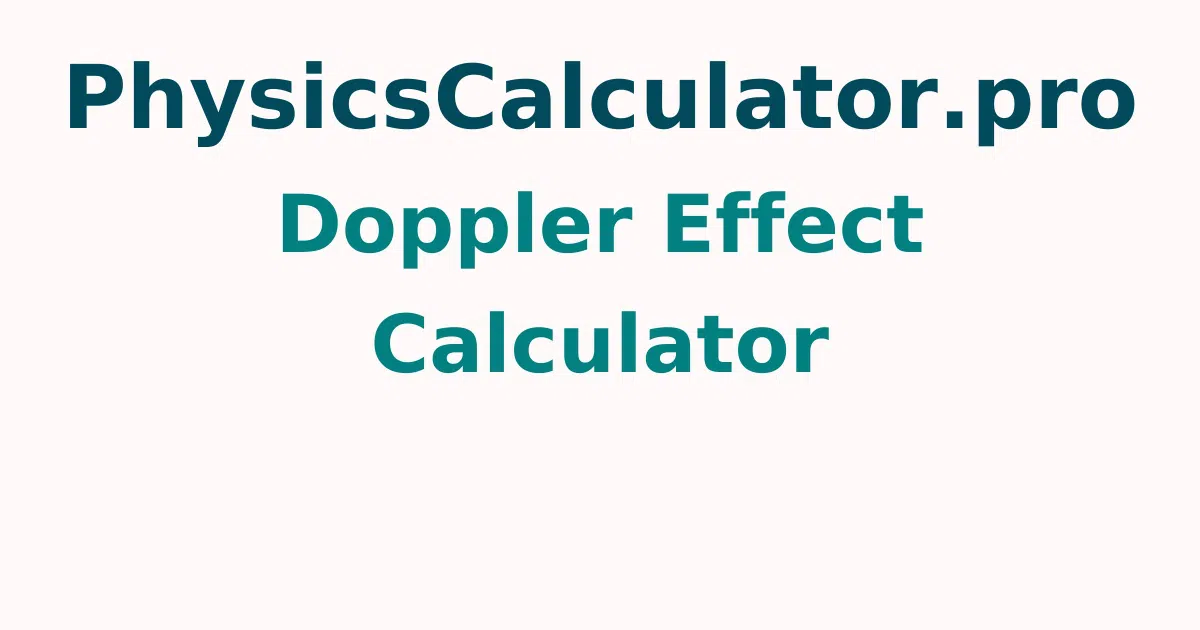Doppler Effect Calculator
The Doppler Effect Calculator is an online application that shows the frequency or wavelength of a wave when the observer is moving away from the source. The tool is simple to use and provides frequencies in a matter of seconds once you enter your data.
Define Doppler Shift
The Doppler Effect is defined as a change in the frequency or wavelength of waves as the observer moves away from the wave source. For example, suppose you're driving down a side street and an ambulance approaches you and passes you. After the ambulance has left, the volume of sound you hear reduces as the frequency drops.
Doppler Shift Formula
The expression f = f₀(v + vr)/(v + vs) gives the Doppler Shift.
- Where,
- f = observed frequency of the wave and its units of measurement is Hz
- f₀ = frequency of the emitted wave and its unit of measurement is Hz
- v = velocity of waves in the medium and its default value is 343.2 m/s
- vr = velocity of the receiver
- vs = source velocity
Question 1: Calculate the Frequency of the Observer If the emitted frequency is 25 Hz, the receiver velocity is 15 m/s, the source velocity is 7 m/s, and the wave velocity is 443.3 m/s, what is the wave velocity?
Solution:
Given: Emitted Frequency f₀ = 25 Hz
Wave Velocity v = 443.3 m/s
Receiver Velocity vr = 15 m/s
Source Velocity vs = 7 m/s
Doppler Effect is f = f₀(v + vr)/(v + vs)
f = 25(443.3+15)/(443.3+7)
f = 25.44 Hz
Hence, the observed frequency f for given inputs is 25.44 Hz.
For more concepts check out physicscalculatorpro.com to get quick answers by using the free tools available.
How do I Use the Doppler Shift Calculator?
The following is the procedure how to use the Doppler shift calculator
- Step 1: In the input field, enter the wave velocity, source velocity, source frequency, and x for the unknown.
- Step 2: To acquire the result, click the "Calculate the Unknown" button.
- Step 3: Finally, in the output field, the wavelength in front of the moving source will be displayed.
FAQs on Doppler Effect
1. Does the Doppler effect modify the amplitude?
The wavelength and frequency of light fluctuate in proportion to each other in the doppler effect. In addition, high frequency/short wavelength waves of equal amplitude have more energy than low frequency/long-wavelength waves.
2. Is there a Doppler effect in FM Radar?
This type of radar is frequently used as a "radar altimeter" to determine the exact height of an aircraft while landing. It's also utilised as a proximity sensor, early-warning radar, and wave radar. When FM is employed, a Doppler shift is not necessarily required for detection.
3. Is the Doppler effect sound affected by wavelength?
The doppler shift induces a wavelength shift at the wave's origin (the source frequency remains constant) Only the wavelength changes for the travelling observer (in the source), whereas both frequency and wavelength change for the stationary observer (experiencing the doppler shift).
4. What is the cause of the Doppler Effect?
The apparent variation in frequency between the frequency at which sound or light waves leave a source and the frequency at which they reach an observer, produced by relative motion between the observer and the wave source, is known as the Doppler effect.
